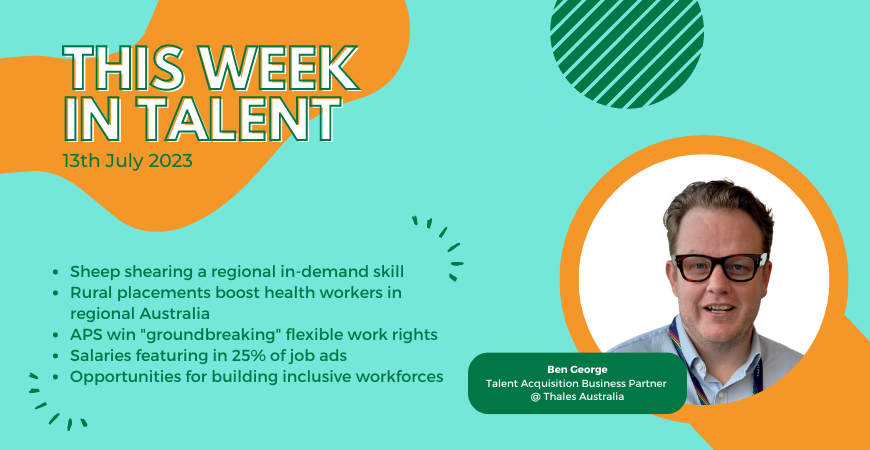It’s great to be back with you all for this week’s TWIT.
I write this from the regional NSW town I grew up near. I’m currently sipping a latte that would give Melbourne baristas a run for their money. As I look out the window and see trucks moving past hauling cotton bales to be processed, it occurred to me that many people from the cities are not be fully aware of the possibilities that exist in regional Australia.
In December is 2021, The Regional Australia Institute commissioned research to find out how regional Australia was viewed by those living in the capital cities. Amongst the findings, they found that the top three factors driving people to leave the cities were
- Avoiding roads and traffic congestion
- Reducing general stress and anxiety
- Reducing cost of living
Transitioning from the metropolitan hustle and bustle to the rhythm of regional life is no small task, and there are significant factors all consider when contemplating such a move. These factors include:
- Lifestyle – This is often the key motivator for many making the ‘tree-change’. Life in regional Australia provides a sense of community often missing in larger cities. The slower pace, cleaner air, and close proximity to nature are appealing factors.
- Housing – Generally, salaries can stretch a lot further in regional areas. Though for some regional centres, COVID made significant impacts on housing, many centres offer larger homes, or even property with land, for the same price as an apartment in a city.
- Jobs – As I mentioned in the last post, job opportunities in regional Australia are not just limited to traditional farming or mining roles. There’s a growing demand for professionals in sectors such as healthcare, education, engineering and technology.
- Education – Many who move to rural towns do so with children. Candidates considering the local school options is paramount to their decision. Smaller class sizes can mean more individual attention, and many regional schools offer excellent education. However, options for special programs or specific sports might be limited.
Making the shift to regional Australia is less about scarcity and more about perception. The opportunities are there, waiting for the right people to seize them. There is a great online resource that offers an opportunity to research these top considerations; Move to More aims to be a one stop shop for information regarding rural communities. Along with insights on over 1700 rural towns, the site promotes information on steps to take when taking the plunge and has a podcast of stories of people making the move.
It’s hard, physical work but meet the young generation of shearers and wool handlers
I’ve had the luxury of working in a shearing shed while growing up and have a great appreciation for shearers. We often think of traditional trades but skilled rural jobs are in high demand.
Rural placements help to boost health workers in regional Australia
Research from the University of South Australia suggests that rural experiences during Health Workers job placements increases chances of having them take a regional job once qualified.
Public servants to gain ‘groundbreaking’ flexible work rights
Former Victorian Premier proposes that public servants get paid less for remote work after many public servants get access to have flexible work arrangements.
The Aussie workers most likely to know each other’s pay
A topic that’s always close to Talent’s heart. Indeed state that salaries are featuring on 35% of job ads, an increase from 21% in the past 4 years.
Championing change: Progress and opportunities for building inclusive workplaces
**SPONSORED**
While 8 in 10 Australians consider DEIB support as an important aspect of an organisation, only 13% of employers intend on addressing these issues in the upcoming year. Download Indeed’s latest DEIB report to understand how to enhance your initiatives and improve the lived experiences of all.







